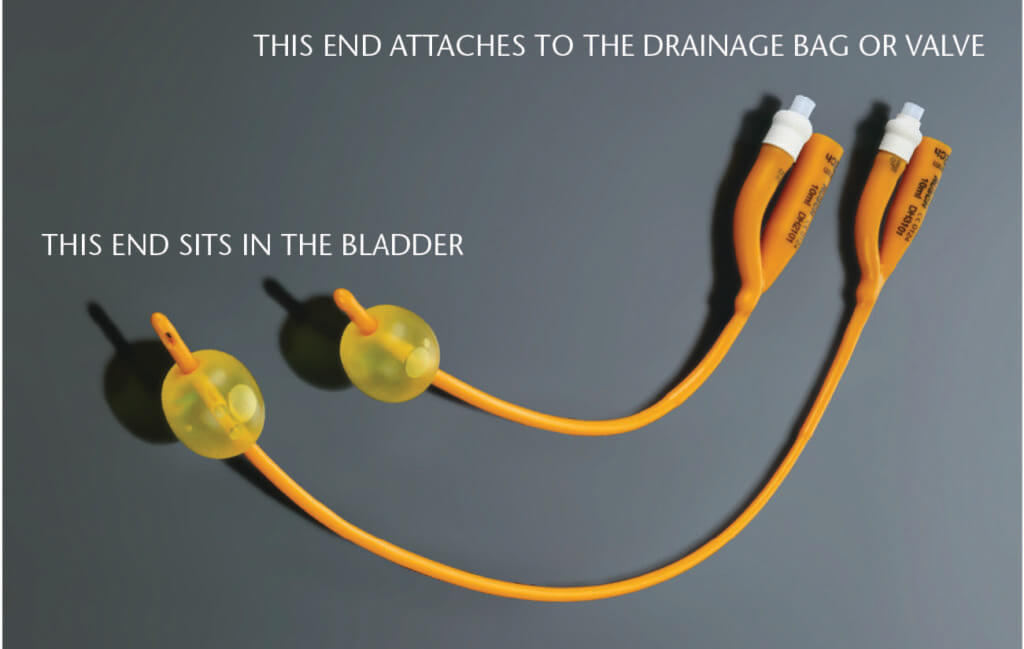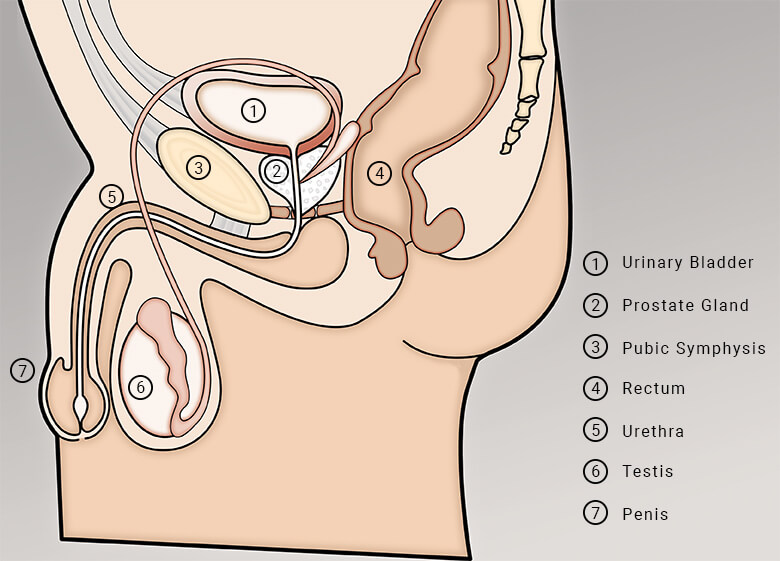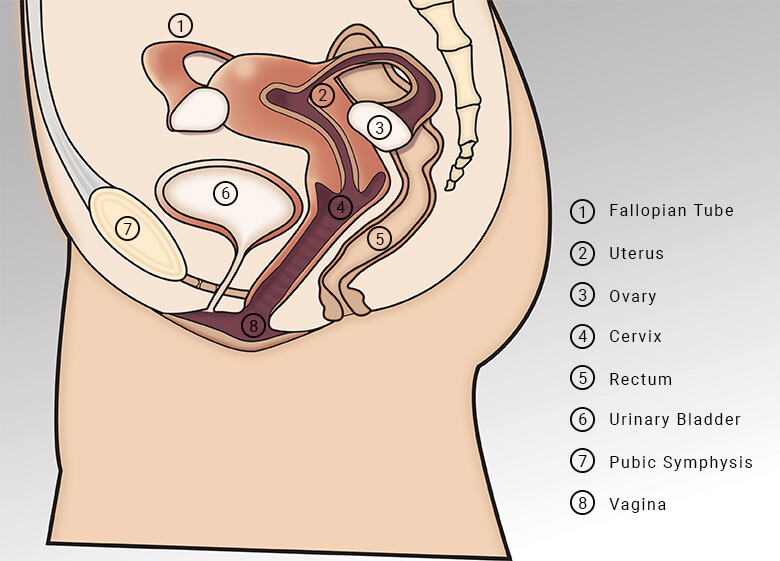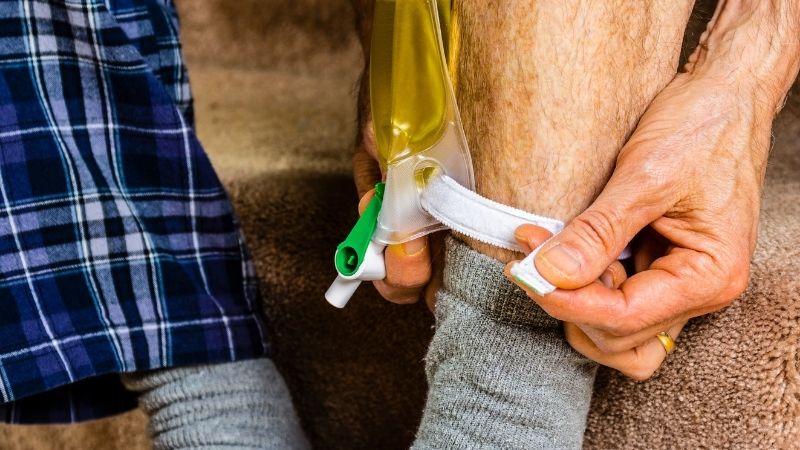What Is A Catheter?
A look a what's a catheter, how they work and what they are used for.
A urinary catheter is a soft hollow tube, which is passed into the bladder to drain urine. Catheters are sometimes necessary for people, who for a variety of reasons, cannot empty their bladder in the usual way, i.e. passing urine into a toilet or urinal.
Indwelling catheters are usually required short term for a number of weeks or months when continuous bladder drainage is needed, but occasionally they are required for long-term use.
Catheters are manufactured in a variety of materials, which mean they can be left in place for many weeks.
Once inserted a small balloon device is inflated, which prevents the catheter from falling out. On no account must you try to remove the catheter without the balloon being fully deflated. If you have a problem with your catheter seek help immediately.
GET YOUR FREE JUST CAN'T WAIT CARD
FREE Just Can’t Wait Toilet Card
What does a catheter look like?

Male & Female Lower Urinary Tract
The lower urinary tract is the term used to describe the bladder and urethra, whereas the upper urinary tract refers to the kidneys and ureters.


Catheterisation of the bladder has been performed since time immemorial to drain urine from the bladder when it fails to empty. The bladder acts as a temporary reservoir for urine on its passage out of the body through the urethra. About 1500 ml of urine a day are produced, containing soluble waste products filtered by the kidneys from the bloodstream.
Why would someone need a Catheter?
With a limited capacity of 300 – 500 ml, the bladder evacuates its contents intermittently about 6 – 10 times in 24 hours. This cyclical filling and emptying of the bladder demands perfect paradoxical coordination between bladder and urethra; as the bladder relaxes to accommodate the increasing volume of urine so the urethra contracts to prevent leakage and vice versa when the bladder empties.
The control mechanism is masterminded by the network of nerves that pass between bladder and brain via the spinal cord, ensuring the bladder not only evacuates its contents completely at each void but also at a convenient time and in an appropriate place. This normal function of the bladder and urethra, collectively termed the lower urinary tract, is vital to health but can readily be disturbed by disease or injury to any of its structures.
![A Full Catheter Bag]()
What happens if you don’t empty a Catheter Bag?
Failure to empty can lead to damaging overdistension of the bladder and back pressure on the kidneys. Stagnant urine becomes infected and in a damaged bladder this can readily lead to serious even life-threatening consequences for the patient.
Failure to store presents distressing and humiliating incontinence not only causing many older people to seek residential care but also raising the risk of skin maceration and ulceration. Monitoring urinary output in the unconscious patient whether under anaesthetic or coma provides the clinician with vital evidence about their condition.
Under any of these circumstances, drainage of the bladder to collect the urine becomes a vital aspect of patient care.
The modern catheter consists of a thin, flexible hollow tube made of silicone or of latex which will normally be coated. A wide variety of polymer coatings have been introduced in recent years to reduce friction by use of hydrogels which can provide a hydrophilic slippery surface and antimicrobials such as silver or antibiotics to counter the risk of urinary tract infections.
Understanding different types of Catheter
Two main types of urinary catheter are manufactured either for single-use or for continuous indwelling drainage. The single-use catheter is selected for intermittent catheterisation, passing the catheter through the urethra into the bladder to drain the urine and then it is removed. For those able to undertake the procedure, this has become the recommended way of draining the bladder.
Many people now perform Intermittent Self Catheterisation (ISC) or Clean Intermittent Self Catheterisation (CISC) as it is sometimes termed routinely every day on themselves. For others, this is not an appropriate procedure and an indwelling catheter is used for continuous drainage. The indwelling catheter, designed by Dr Foley in 1937 is retained in the bladder by a balloon which can be inflated and deflated. Short-term (less than 30 days) or long-term (more than 30 days) drainage can be maintained but the end of the catheter should either be connected to a catheter valve, which can be opened and closed, or to a urine collection bag to create what is termed closed drainage to reduce the risk of bacterial infection.
Urethral catheterisation is the usual route selected when short-term drainage of the bladder is anticipated. Suprapubic catheterisation provides an alternative approach which involves a short operation, often performed under local anaesthetic, to form an artificial track directly into the bladder through the lower abdomen. This is the preferred route for patients requiring long-term drainage of the bladder, avoiding injury to the urethra and enabling the patient to remain sexually active.
![Urinary Catheter]() Short Term vs Long Term Catheters
Short Term vs Long Term Catheters
Short-term catheter drainage of the bladder is frequently performed for patients undergoing surgical procedures or for those unable to pass urine because of obstruction to the urethra such as men with an enlarged prostate which compresses and closes the urethra. A catheter may be required to introduce therapeutic drugs or to record bladder pressures.
Long-term catheter drainage of the bladder is considered only as a last resort because of the risk of complications from catheter-associated urinary tract infections. Patients treated in this way form a heterogeneous group which includes those with neurological conditions that prevent the bladder from emptying.
This group includes people with spinal cord injuries, multiple sclerosis or stroke, those with intractable urinary incontinence or chronic debilitating illnesses which restrict their mobility and ability to use a commode or toilet and finally, those who are unfit to undergo surgery.
Passage of a urinary catheter to drain and collect urine from the bladder can resolve a wide range of medical problems and hence its judicious application plays a pivotal role in patient management.


 Short Term vs Long Term Catheters
Short Term vs Long Term Catheters